IPFS

Chip Saunders
More About: History(Part 2 )60 Years Of The AR-15 - Understanding America's Rifle
Desert Storm and the Rebirth of the AR10
All these developments were plodding along, rendering the AR15/M16 series more effective than ever before. But then came desert warfare. The entire premise of the intermediate rifle cartridge had been predicated upon the idea that most engagements against other soldiers were NOT at very long distances. But in the expanses of the Iraqi and Kuwaiti oil fields,...you could see the enemy in the open at distances which would render any lucky hit with a 5.56 round about as annoying as a bee sting. Suddenly, soldiers were wishing they had true far-reaching, hard-hitting "battle rifles" like the M-14 the M16 had replaced. In fact, the Navy still had many M14s in mothballs that they had never gifted away to other nations like the Army had done, sending most of theirs to the Philippines in the 60s and 70s. When the SEAL teams wanted to lay their hands on some, the Navy was able to deliver.
Once the Kuwait ordeal was concluded, the lessons of the desert learned, the Pentagon procurement dudes were deluged with demands by all the special forces commanders that they needed to have at least a few battle rifles in inventory. While a great number of M14s were negotiated for return from the Philippines as an interim solution, they had seen hard service and needed refurbishing. Studying the problem, the Pentagon realized that cost was nearly greater than buying entirely new rifles. And if they were going to do THAT,...perhaps a newer better rifle should be investigated and/or acquired. At about that time, a Florida manufacturer called Knight's Armament had as a consultant Eugene Stoner himself and decided to take all that had been learned over the decades about how to improve and accurize the AR15 and apply that to a new modern AR10. While it took many years to happen, the Knight/Stoner rifle was eventually adopted as the M110,...in 2005. It only took ANOTHER desert war to make that happen.
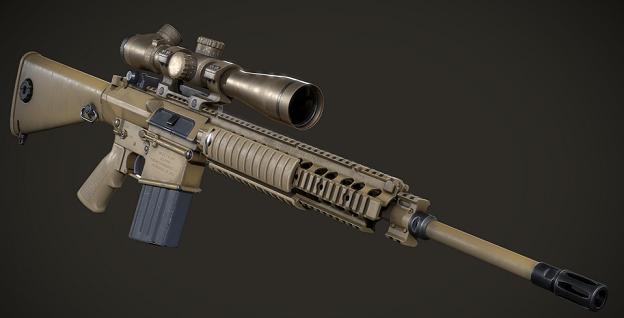
But that didn't happen in a vacuum. The adoption of the M110(AR10) happened after 20 years of the renewed interest of the AR10 in civilian circles as well. The gun engineering community is rather small, and nothing stays secret for very long. As soon as it was learned in the early 90's that the legendary Eugene Stoner himself was working on reintroducing the AR10 as a military weapon, many veterans who had returned to civilian shooting circles decided they didn't want to wait and began lobbying other manufacturers to bring something to market NOW. And they did. The first, appropriately enough, was Armalite. This was not the original Armalite. The trade name had been sold for a bargain decades before, and the owners had decided to make the new AR10 their flagship product. They were soon followed by DPMS, and in the years to come, eventually Smith & Wesson, Bushmaster, Rock River Arms and many others. While not as numerous as their smaller cousins, the AR10 type has been enjoying more popularity than ever before.
In great part, this is due its commonality with AR15/M16. To use the larger rifle does not require learning a different platform. While the parts interchangeability is only 40%, the tearing down, cleaning and reassembly procedures are almost entirely 100% the same. That's not only attractive to military administrative types who have to deal with training regimen and doctrine, but even with Joe Sixpack.
Caliber variety and growth of the AR system
While the average person is not aware, it is none the less a fact that many calibers developed over time have mostly been done so by first experimenting with easily available brass casings of existing calibers, which are then modified and reformed to create the new experimental cartridge. These are known as "wildcats". Sometimes a wildcat is adopted widely enough to become mainstream. The 7.62x51NATO (also known as .308) has been used as the base case from which many popular mainstream calibers have been developed. These include the .22-250, the .243, the .260Rem, the 6.5Creedmore, the .338, the .358, and many others. The list of calibers which use the same rim diameter (which would allow easy adaptation without the need for a different bolt) is even longer. So of course, it was only a matter of time until people started making their own AR10 in calibers they thought might better suit certain purposes.
And in fact, while the .308/7.62NATO is certainly a farther reaching caliber than the weaker 5.56/.223 of the AR15/M16 series,...it is not the flattest trajectory caliber based on that cartridge case. Deciding that good was not good enough, DPMS was the first to offer as an option on their AR10 a chambering in .260Remington; basically a .308 case necked down from .30 inch to .26 inch. The caliber offered at 1000 yards and beyond nearly all the hard-hitting power of the .308, but with less recoil and less trajectory correction calculation. Conceptually, this should make for a weapon that was even easier to land hits at extreme range. The idea caught on so well that the .260Remington combination was investigated thoroughly, and some very minor dimensional design flaws to the cartridge were identified and corrected by designing an entirely new version of the caliber, designated the 6.5Creedmore, which has become one of the hottest calibers today.
The sportsmen who wanted to have the quick follow up shots an AR10 offered, but in a bigger caliber for large game (like moose) and deadly game (like Kodiak bears) wanted something a little bigger. Fortunately it was no difficult feat to offer them in .338 or .358. This year saw the introduction of the .500 AutoMax, specifically designed for the AR10 system, throwing a .50 caliber bullet. If you're on foot in Grizzly country, this might be for you!
.jpg)
And likewise, caliber options and experimentation began popping up in the smaller AR15 system as well. Not only did some shooters seek flatter trajectories and hard-hitting rounds,...some just wanted to shoot the cheapest ammo they could get,...and that meant surplus soviet stuff. While cheap .223 ammo cost about $0.30 cents each, soviet surplus 5.45x39 of similar performance was only 2/3rds that price. Same for the 7.62 russian round. These were the first conversions. But soon 9mm became a popular choice too. (More on that in a bit)
The quest for a harder-hitting round for longer distances in the AR15 brought forth the 6.5Grendel (also known as the .264LBC). While it achieved that goal, it required a full-length barrel to truly realize the velocity it needed to do that. The U.S. Special Forces Command (SOCOM) was intrigued by the 6.5Grendel, but having grown quite fond of how handy the M4 carbine envelope was, sought the same performance in carbine length barrels. Internal development in conjunction with the U.S. Army Marksmanship Unit produced the 6.8SPC (Special Purpose Cartridge). These two rounds have slowly become adopted in greater numbers by shooters. More recent developments include the .224 Valkyrie, which is only a few years old.
Limited only by if the cartridge can fit in the limited dimensions of the magazines, folks who wanted large bore options developed new calibers specifically for the AR15 system. SOCOM was involved in this as well, producing the .458SOCOM in response to Task Force Ranger's bad experience in Somalia against drug-envigored opponents who stayed upright and continued fighting despite direct hits. Slightly more powerful is the .450Bushmaster that came about shortly after. The big boss, the .50Beowulf debuted also in the early 2000s. One of the newest is the .350Legend, introduced just earlier this year.
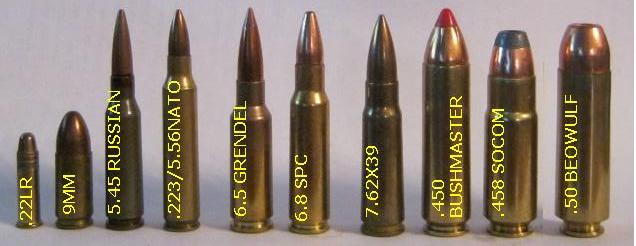
Gee, that sounds complicated enough to write a book about just THAT! Yep,...it's been done.
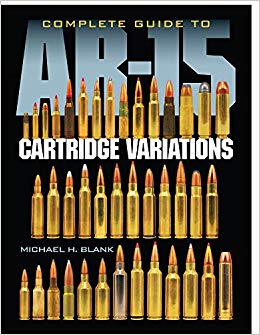
Despite all this, the vast majority of AR15s are still chambered in .223Rem./5.56 and the AR10 is still usually found in 7.62/.308Win.
Pistols/Shorties/PDWs
I wrote an article last year that covered a lot of ground on the trend in Personal Defense Weapons (PDWs) in small sizes usually associated with submachineguns. Refer to that at this link here. Without rehashing the entire thing, let me summarize the part pertaining to AR15 "assault pistols".
Federal firearms laws as laid out in the 1934 National Firearms Act (often referred to simply as the NFA for shorthand, and weapons under its rubric are referred to as NFA weapons), stipulates that any rifle with a barrel shorter than 16 inches is a Short-Barreled Rifle (SBR) and requires special licenses to possess. Likewise, any pistol that has a shoulder stock attached to it also becomes an SBR and if not properly licensed and registered, is a crime to possess. There are some limited exceptions to this, but that is all rather esoteric collector museum gobbly-gook which we won't bother with here.
AR15 pistols have existed for a long time. But they were primarily curiosities; impractical noise-makers that were more range toy than tool. Having no buttstock out of legal necessity and no really effective way to stabilize them when firing, hit probability was abysmal, precluding them from serious consideration for anything other than impressing fellow Bubbas. But everything changed about 2012, however, when along came the first commercially manufactured and marketed "arm brace" for the AR15 pistols.
An arm brace, meant to simply help stabilize a very large handgun, was perfectly fine. But what if that brace was significantly large in and of itself that one could improvise and use it adaptively like a buttstock? Hmmmm. Was it then a stock? Or was it merely an arm brace? Folks began buying these arm braces like mad and openly using then as improvised stocks. The practical effect was to have all the utility of an SBR, but without all the government BS. There was a few years there where the BATFE tried to scare folks into believing that by "misusing" an arm brace as an improvised shoulder stock they were violating some kind of law and could be prosecuted. But eventually, that bluff was called and it has been established that shouldering your pistol is not a crime.
.jpg)
This was a big deal. For years, many folks had wished they could have a small and handy version for getting in and out of vehicles more easily, or for stowing in small cramped craft like boats and planes. Indeed, even for use in home defense, navigating through hallways and around corners with a long-gun was always less than ideal. But in all the same ways that a submachinegun or PDW were of utility, now the citizen could experience that same benefit without paying the extra licenses and fees and waiting period BS.

Another thing happened at about the time the pistol brace was coming onto the scene. There was a resurgent interest in pistol caliber carbines (PCCs), primarily 9mm ones, which is the vast majority caliber of the type. While in my opinion pistol-sized .223/5.56 rifles are silly because of the severe loss in velocity and performance and the added penalty of increased blast noise,...pistol calibers such as 9mm and .45 are an entirely different matter. Unlike the .223 caliber, pistol calibers get a full burn of their propellant and thus full ballistic performance in rather short barrels. Nor are they nearly as thunderous. 9mm ammo is also cheaper than 5.56 ammo, so for simply blasting away recreationally or in training, it costs less to throw little 9 millies downrange. While the 5.56 cartridge does not deliver a lot of kick to the shooter, the 9mm tends to recoil just a bit less. All this combined made the little packages well suited to smaller statured shooters such as women and children, and not as intimidating for them either. So while 9mm AR15 types have been around a long while, their newer shorter versions have been more popular than ever and they are becoming common.
The AR15 pistols are also becoming more in vogue because of the recent increasing popularity of silencers. I wrote an article on that too, and you can read it here. Adding a silencer (more properly called a "suppressor") to a weapon makes it longer. But if the weapon is already rather short,...such as one of the currently popular AR15 pistols,...then the entire thing is only as long as a traditional carbine or rifle. And this is again ideally suited for children and females new to shooting because the unpleasant noise is much reduced.
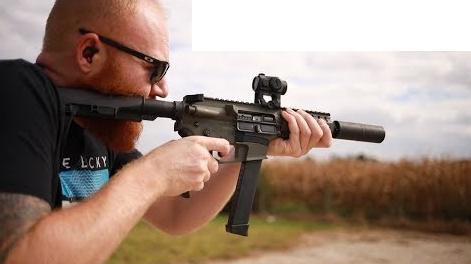
So, you say to yourself, this sounds great. I'm gonna go buy an AR15 lower receiver and then stick a 9mm pistol upper assembly on it and an arm brace on the back. Well,...there are a couple potential pitfalls you need to be aware of first. Some legalese that needs to be paid attention to.
Remember the NFA of 1934 I mentioned earlier. The way it is written, no special permission or other BS is required to make a pistol into a rifle;...but making a rifle into a pistol,...that is trouble. Yet, dimensionally, the AR15 receiver for either a rifle or a pistol is exactly the same. The ONLY thing that differentiates between them is how they are MARKED. Prior to the arm brace coming to market and creating the demand for AR15 pistols, many AR15 receivers were marked as RIFLES or CARBINES. Rifles are not supposed to have barrels shorter than 16 inches, and even if you comply with the law by putting an arm brace on there,...it was manufactured as a rifle, and therefore in the eyes of the law shall ALWAYS be a rifle. To resolve this, receivers manufactured for sale as non-completed firearms since then have almost all been marked as "pistol" or more often, just given a "genderless" model designation. And due to the fact that you might choose an exotic caliber, they are now nearly all marked as "multi" where the caliber identification is engraved. Thusly, such a receiver is unencumbered by these entangling legal tripwires and is free to be legally built into a short AR pistol or rifle of whatever caliber you please. But there are many AR15 receivers floating around for sale,...some of which are marked as RIFLE. Unless you know what you are doing, you could inadvertently build yourself an NFA-regulated short-barrelled rifle and be in legal trouble.
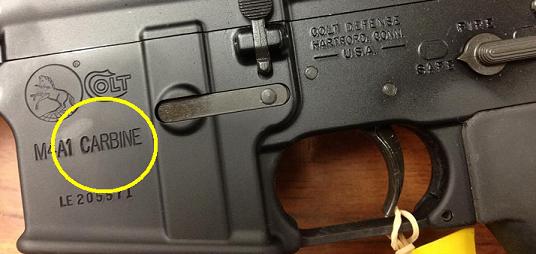
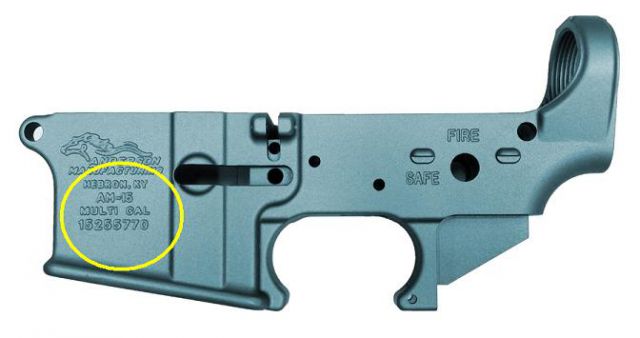
"Ghost Guns" / 80% non-firearms
Or rather than bother with all that, you COULD just make your own AR15 lower receiver in the privacy of your own home. Federal law does not prohibit this,...at this time. Future legislation might come to pass that changes this, but for now,...nothing at the federal level bars you from manufacturing your own AR15. Local laws might have something to say, depending on where you are.
Federal law only began REQUIRING serial numbers on weapons newly manufactured in 1968. While most manufacturers, for quality control purposes, assigned serial numbers to their products, it was not a universal practice. Many of the rifles and shotguns sold through mass-marketing outlets like Sears, J.C. Penny and Montgomery Wards prior to that time had no such numbering. The serializing was required via a law based on the COMMERCE CLAUSE nexus of Constitutional juris prudence. This is key because the Gun Control Act of 1968 (GCA of 68') was enabled only as a regulatory scheme upon manufacturing and importation in pursuit of commerce. Not possession or fabrication for personal use.
Therefore, if you decide to manufacture a firearm in your basement or garage INTENDED only for your personal use,...there is currently no markings of any kind required. You may in fact mark it in any fashion your desire, or not at all.
As a result, there is no database such a firearm can be traced within,...unless you voluntarily decide to notify the administrators of such a database. California, for instance has passed state level law requiring anyone who has made a home-fabricated firearm to mark it with a serial number and enter it into the state's database. Other states are considering similar measures.
Because this has become an increasingly popular alternative over the last couple decades, there are suppliers who sell AR15 kits with all the parts except the lower receiver, while others sell "nearly complete" lowers that have approximately 80% of the machining processes performed, leaving you to complete the remaining 20%. Because they are only almost finished, they are not a firearm, according to CURRENT rules observed by the feds. (That may change in the future depending on the whims of Congress.) And as a "non-firearm", they are completely unregulated and able to freely and DISCRETELY be sold across any and all jurisdictions within the U.S., including the unfriendly Bill of Rights exclusionary zones like California, New York, Massachusetts, New Jersey, etc. (Note: As this article is being published, New York is proposing the ban of sale of "precursor" gun materials, so this might very soon change.And Pennsylvania's Attorney General just decreed by the stroke of a pen that 80% receivers are now considered the same as any complete firearm.) To what degree those who possess these 80% receivers decide to comply with local laws is their responsibility.
.png)
But of course, some of these 80% guns have been completed by ner-do-well bad actors and involved in crime. But because there is no way to trace their origin, hoplophobic hand-wringing disarmament advocates squawk in blustery alarm that these "ghost guns" have no history to be unearthed and followed as leads.
But for the liberty-minded,...this might well be ideal. Except for the digital transaction trail of purchasing the components, legally making your own "ghost gun" goes a long way toward protecting you from potential future illegal seizing of it by corrupt authorities that may come to power. The Jews of Europe could have been greatly better off with a bunch of covert and off-the-books "ghost guns". History does repeat itself, you know.
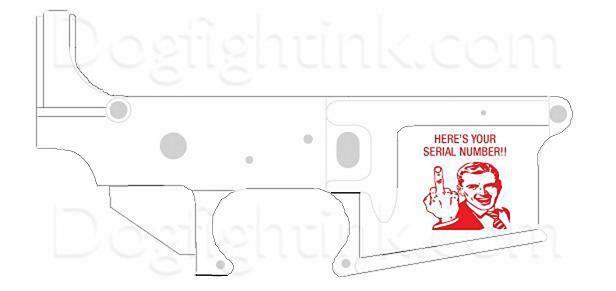
Now if you go online in some of the various gundude chat forums and discuss making your own AR15 from an 80% receiver,...you will get a WIDE variety of opinions and uneducated guesses about whether it is legal or not to at some future point to sell off your home-made firearm, especially if you elected to not mark it with a serial number. While I am not an attorney, to me the law regarding this is rather clear that you are only prohibited from manufacturing a firearm without a serial number if with INTENT to sell or profit. If, say, 10 years later, despite having fully intended to keep your rifle and pass it on to future grandkids,...but you have a financial emergency such as medical bills or damage from a natural disaster,...and need to sell off cars, appliances and jewelry to make it through,...nothing (from what I can see) prohibits you selling off the rifle you once made and fully intended to keep and not produce for commercial profit. However, you may have some difficulty finding potential buyers who are comfortable and OK with buying a modern weapon bearing no serial number. Many folks are still unaware this is legal. So it might behoove you to give the weapon markings such as a serial number, just for the sake of keeping the sheep calm. And since you are a freedom-oriented person who would never willingly register your weapon with anyone anywhere at anytime for any reason anyway,...what does it matter?
To that end, there are folks producing and selling acid-etching template stencils for you to etch markings on your home build project. One such outfit I like is DogFightInk.com who has stencils to make your AR15 appear at first glance to actually be a rare and never imported foriegn-produced variant, such as those made in Canada or Taiwan. I mean, since you're not trying to defraud anyone by trying to pass off your common Bubba-made rifle as an exotic Taiwanese government-issued weapon,...what's the harm? It's just for your own private amusement.
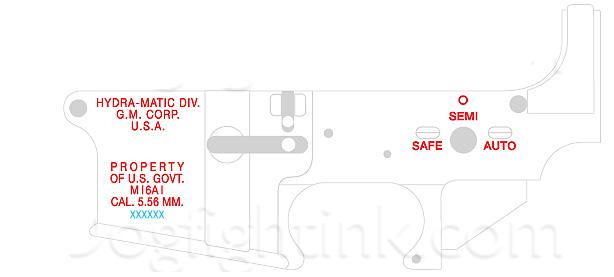
The ATF, in typical fashion, got their panties in a twist over this when, in order to make the first glance seem as authentic as possible, some people have also had etched onto the lower receiver a FAKE pin for the auto sear. Only a true gundude is even likely to notice such a detail. The auto sear is necessary to make an AR15/M16 rifle function like a machine gun. But since the pin is fake and there is in fact no hole for such a pin,...why the fuss? Because ATF claims that putting such a marking on the weapon is MARKING the location for where to drill said hole, and supposedly could be viewed as INTENT to make such an alteration without proper legal permission. ATF's position on this was a not so veiled threat that they would prosecute folks for making such markings. But so far, no one has been arrested or charged for such and this appears to be yet one more of ATF's baby tantrum empty threats.
Manufacturing your own fully functional 100% lower receiver from an 80% is easy-ish,...but not necessarily something anyone can do. If you have never worked on your own car or built anything out of wood,...I'd say don't try this. But if you have any sort of machining experience, this should be a cake walk. Obviously a proper milling machine would be best to complete the steps, but many folks have successfully completed these with mere drill presses, routers and even hand-held Dremels. Sometimes groups get together who have met on local gun discussion forums and have a "build party", somewhat like a 1970s Tupperware party, but for men and guns, and held at someone's garage who has the proper tools and some prior skill.
CALIBER VARIANTS
While the original AR10 was chambered in 7.62NATO/.308 and the AR15 was originally chambered in 5.56NATO/.223, ever since the mid-80s, new and differing calibers have been adapted, producing a dizzying array of possible calibers one can choose from if they want something other than chocolate and vanilla. Purists will say that this range of calibers is pointless and detracts from the utility of the weapon system for several reasons. Primarily, that having a rifle chambered in a caliber other than that used by others means your buddy with the original style of rifle can't share his ammo or magazines with you and vice versa. While in a military or police context this is an entirely valid criticism, it doesn't necessarily apply to the individual sportsman. Your particular caliber variant might require specialized magazines or certain spare parts, but aside from maybe having to hunt a little harder or pay a little more for those...perhaps the trade off is worth it to you for whatever extra or different performance your combination provides. Another criticism, which is sometimes true, is that the AR15 wasn't designed for that caliber, and reliability of the adaptation is poor as a result. Many caliber conversion variants are just as reliable,...but yes,...some may not deserve to exist. Research of what works for you is your responsibility.
Here is a partial list of the different calibers that have been or currently are available in the AR15/AR10 system.
.204Ruger
.22lr
.224Valkyrie
.243WSSM
.25WSSM
.260Rem.
.300BlackOut
.30RemingtonAR
.300HAM'R
.338Federal
.350Legend
.358Winchester
.40S&W
.45ACP
.450Bushmaster
.458SOCOM
.50Beowolf
6.5Grendel
6.5Creedmore
6.8RemingtonSPC
7.62x39
9mmLuger
10mmAuto
The list is even longer than that, but consists mostly of esoteric or uncommon chamberings for highly customized rifles and applications, so we won't bother with them here. Nor will I detail even these on the list, as that would be a book all of its own. However, there are a few that need mentioning.
9mm Carbines and Pistols
In 1982, Colt (who was the company holding the AR15/M16 patent then and was the US govt contractor supplying them) received a solicitation from the DEA for a 9mm submachinegun for their raid teams to replace their aging Uzis. Colt engineered a variant that met the DEA's request. It soon caught the attention of various other government entities (as Colt had hoped) and sales were brisk. Civilian demand wasn't all that keen for a commercial model yet, but Colt made one anyway. It didn't fail, but neither did it catch fire,...until about 30 years later, when pistol caliber carbines recently started becoming all the rage.
Because the first contract with DEA was meant to replace Uzis, Colt engineered the 9mm version to utilize DEA's existing stockpile of Uzi magazines. And since it was already a well designed magazine, why try to re-invent the wheel with a proprietary magazine just to get a few more bucks? All the old Uzi mags required was a minor alteration by cutting a new slot on one side, and they were good to go. And so when Colt began selling the CAR-9 civilian model, they used the same feed device. Over the years afterwards, many people began copying Colt's 9mm and selling their own version. But they all liked the utilizing of the modified Uzi magazine and it was retained in nearly all copies,...until someone was able to adapt Glock mags to their version.
Because Glocks had taken over the handgun world and were the most popular handgun around, magazines for them were everywhere and cheap. Extended mags began appearing in the early 2000s, and they were relatively inexpensive, costing about the same as newly manufactured Colt/Uzi mags. Suddenly, there existed the possibility of having a 9mm carbine that also used the same feed devices as your sidearm. This is an attractive feature for some, and over time, the Glock magazine version of 9mm AR15s became the dominant variant you usually see today.
.jpg)
Aside from whether you would like your 9mm AR to use the same magazine as your Glock (if you have a Glock, that is), a big difference between these two choices of magazine type is that the Uzi/Colt style mag uses a dual-position feed lip system, while the Glock mags use a single-position feed. While single-position feed magazine USED TO BE less reliable, that is no longer the case, especially with Glock magazines. However, the dual-position magazines are indeed MUCH easier to load and less fatiguing to do so. It is relatively simple to just roll a fresh round into the Colt magazine without any special tools. But try to load the Glock magazines without a loading tool and you will be busting thumbs.
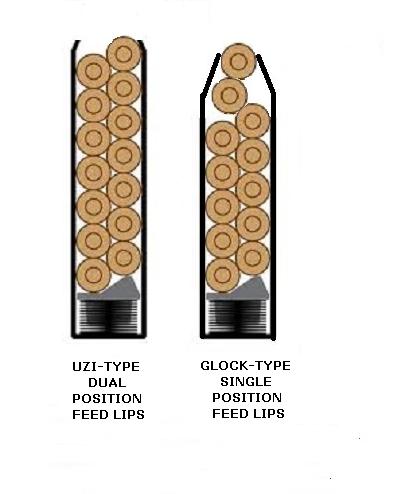
But all of these were operating by way of a different method than either direct-impingement or piston-driven gas systems as the rifle previously had. Due to the wide variety of ammunition in 9mm, the propellants used, bullet weights propelled and pressure levels created during firing, simple unlocked blow-back was used. Nearly every 9mm carbine or submachinegun ever developed uses this principle, and for the same reasons. However, adapting this to the AR15 bolt assembly was not without problems. Typically, blow-back 9mm systems operate best with a rather heavy bolt. But the dimensions of the original AR15 bolt carrier assembly don't allow for very much mass, since the entire design originally was meant to keep rearward moving mass at a minimum. Thus, the blow-back 9mm AR15s tend to have above average bolt velocity and can beat the gun apart and wear out more quickly than would be desired. This was ameliorated by inserting heavy tungsten weights in the bolt assembly, and other tricks, but with limited success.
But 2 years ago, a leading AR15 manufacturing company devised an entirely new bolt system for pistol caliber ARs, and it has revolutionized this category. So much so, I have one myself. This is the "Banshee" series, by CMMG. The trick is in the "delayed blow-back" system that some call a "semi-locking" bolt. Looking deceptively like a standard AR15/M16 multi-lug locking bolt, the rear face of the lugs, rather than being a 90 degree flat rear face, are in fact cut at an angle, so as to be approximately 45 degrees instead, as are the lugs in the barrel extension that these lugs mate up to. Upon firing, these slanted angled lugs slip on each other and allow the bolt to rotate out of engagement and the bolt to unlock and be blown to the rear. However, this takes just enough dwell time as to not allow as much rearward pressure to act upon the recoiling bolt assembly and the velocity of the bolt assembly is much reduced, as is also the felt recoil to the shooter, resulting in a much smoother shooting experience. When adapted to full-auto fire, it also reduces the cyclic rate from nearly 900 rpm to a more manageable 650 or so rpm. If you fancy a 9mm AR15 carbine or pistol, I highly recommend the Banshee. But nearly more important, this same system is available from CMMG in calibers that have traditionally been problematic in simple blow-back carbines because of their power level. The 10mm most specifically, benefits best from the radial delayed blow-back system.
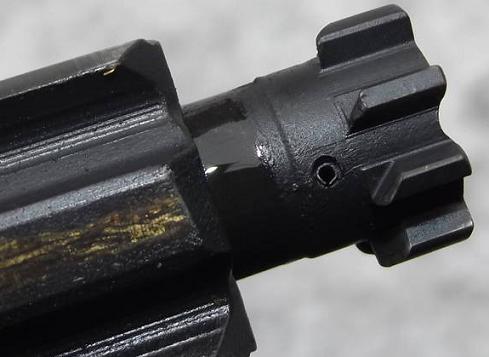
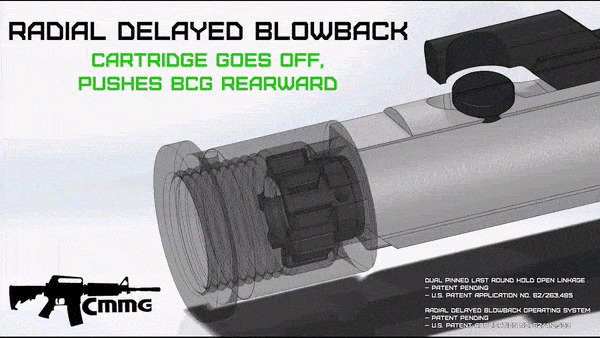
.22LR
While there have been many .22lr rifles made to mimic the AR15, most actually merely appear to be an AR15 but are simply polymer-clad clones that internally are an entirely different animal. If you already have an AR15, or perhaps even an extra lower receiver lying around (such as an 80% project you completed perhaps), there are upper receiver sets you can buy or build from parts that allow you to simply swap out from one caliber to another or to dedicate to that other receiver. One of the better ones is made by (again) CMMG.
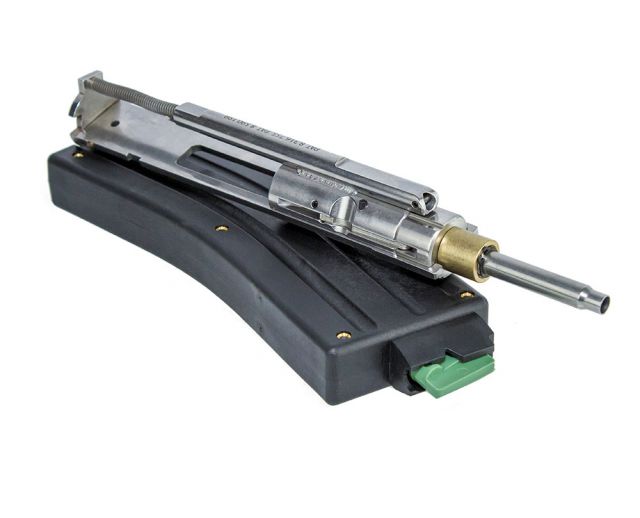
One of the greatest benefits of a .22lr AR15 is cheap practice with inexpensive ammunition. They also make for a great choice to train new shooters on the AR15 platform, simplifying and reducing familiarity issues between different guns and accidents that can occur. If the kids want to shoot something like what the parents have, but don't like the extra noise or just aren't otherwise yet ready for that big next step up,...one of these makes for a great introductory rifle.
.300Blackout (aka .300Whisper)
One of the more eagerly adopted new calibers in the last 10 years has been the .300Blackout. It also goes by the name .300AAC but originated back in the last century as a little known experimental cartridge called the .300Whisper. Despite the nomenclature, this little round has indeed earned a nifty legend in a short period of time, supposedly having been the round used to kill Osama Bin Laden by the U.S. Navy Seals. I wrote a brief article about it a few years back and you can read that here.
As far as its ballistic performance, the numbers indicate that it merely duplicates the 7.62x39 AK47 cartridge, throwing a 110-120 grain bullet at about 2200 feet per second, which doesn't seem very impressive at all. But due to the unique dimensions of the case and the requisite powder used, it does so with only a 9 inch barrel, as opposed to the 16 inches of barrel required for the 7.62x39 to achieve the same thing. What that means for special operations soldiers like the Seals is that one can stick a silencer on their weapon and have an overall length no longer than the standard envelope. Additionally, since this cartridge uses "American" .30 caliber bullets of .308 diameter, instead of the 7.62x39's metric .311 diameter projectiles and bore, a MUCH larger selection of custom bullets in all shapes sizes and weights can be loaded into the .300blk, including heavies like 200-220 grain pills, traveling at just below the sound barrier. Thus, one can carry both the supersonic (and slightly more effective) battle ammo, as well as the subsonic and efficiently quiet heavy bullet ammo, and use whichever best suits their mission as it unfolds.
Because the parent case of the .300Whisper/Blackout/AAC is the .223 the AR15 is originally designed for, not much needs to be done to modify an existing AR15 to the caliber. It uses the same bolts and the rounds fit in the same magazines.


Thusly, one could (if they had the proper tools and gauges) simply change out the barrel and have a different caliber. Or alternatively, simply swap out another barrelled upper receiver entirely.
As mentioned earlier regarding arm braces for AR15 pistol variants, it has been popular with some to create short sound-suppressed examples in this caliber, providing a weapon that rather easily can be transported in and out of vehicles, shoot quietly, and in a caliber at least as effective as the famed AK47.

But if this caliber combination intrigues you, there one thing you need to know before you commit to it. Because the .300blk is based on the same case as the .223/5.56 and uses the same bolt and magazines,...it is possible,...if one is not paying attention,...to inadvertently load a magazine of one caliber in a gun meant for the other caliber. If the .223/5.56 is accidentally loaded and fired in a .300AAC chamber, it will be a mess that will render the gun inoperable temporarily and maybe even damage it,...but unlikely to cause injury to the shooter. The situation is ENTIRELY different, on the other hand, if the .300Whisper is accidentally fired in a .223/5.56 weapon. KABOOM!!!! Metal bits will fly apart like grenade shrapnel. DO NOT LET THIS HAPPEN. The best way (in my opinion) to prevent such tragedy is to ensure you use color-coded magazines for the different calibers.
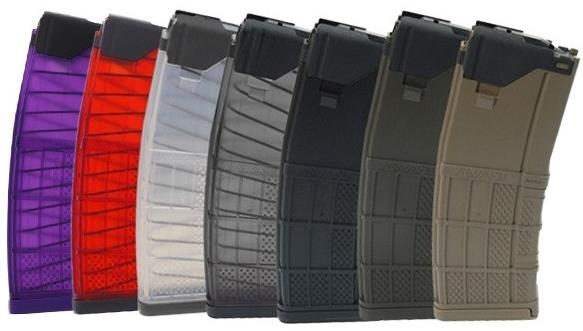
Its possible to either buy mags of different colors, but some folks use fabric dyes to colorize polymer magazines like the popular Magpul Pmags. How you discriminate among your magazines to ensure there are no accidents is up to you. But don't leave it to chance.
OPTICS
Glorious Glass or Googly Goof?
While U.S. military rifles have traditionally been designed to be used with "iron sights" or "open sights", recent trends have seen our soldiers adopting and utilizing optical sighting systems more and more. Partly this has been occurring in no small part due to the fact our boys have been deployed in vast open desert terrain these past 30 years, where some magnification could be rather handy. Although there have been optics issued in small quantities for the M16/AR15 since the beginning.
It would be too big a topic to cover optics in general, but we'll cover here a few of the most common found on the AR15 type of rifle over the years.
But let us first break these down into 3 categories;...
Magnified
Non-magnified Red dots
Night vision
The ones most regular folks are likely familiar with are traditional magnification type, where we have essentially a little telescope with cross-hairs for an aiming point. For decades, there was essentially only one that was used on the AR15/M16, which Colt had contracted to be produced in Japan by Tasco and a few others. It was produced in 3x power and 4x power magnification. These saw limited issue to some U.S. troops and special ops commandos.
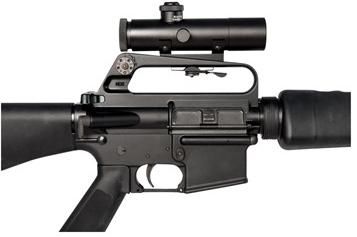
First designed in the early 60's, it was OK for its time, but today many consider it dated and obsolete. The Chinese imported a copy during the 90's for just $20 bucks back then, which I used extensively and thought was quite a bargain. Today, you'll spend $50 or more if you can find one online or at a gun show. Brownells just started manufacturing new reproductions from the original Japanese contractors, and it sells for $300. The genuine Colt examples are collectible and priced far higher.
But the next biggest magnification optic to see wide adoption was the ACOG (Advanced Combat Optical Gunsight). First designed and submitted for government trials in 1987, it was truly a game-changer. Designed by a fellow who knew how well soldiers could break nearly anything, it was built to be bulletproof,...and has in fact saved a few soldiers by stopping bullets.

It was tough enough to be the first ever scope adopted by the Marine Corps for general issue, and has been similarly adopted by some U.S. Army divisions as well. Unfortunately, toughness and quality do not come cheap, and these cost as much as a rifle itself.
























